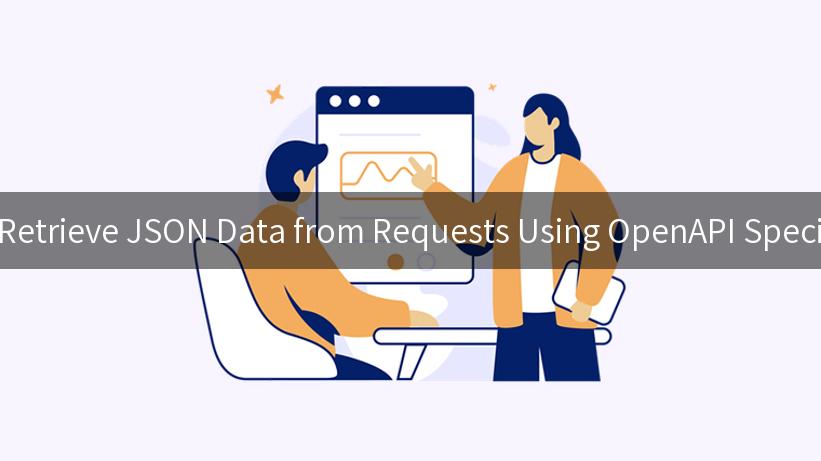
In today’s digital world, APIs (Application Programming Interfaces) play a vital role in enabling different software systems to communicate with each other. With the increasing complexity of APIs, there is a need for a standardized way to describe them. This is where the OpenAPI Specification comes into play. OpenAPI provides a framework for describing the structure and behavior of APIs, making it easier for developers to understand and work with them. This article will delve into how to retrieve JSON data from requests using the OpenAPI Specification, focusing on tools like APIPark, IBM API Connect, and API gateways. We’ll also discuss authentication methods like Basic Identity Authentication and APIKey.
Understanding OpenAPI Specification
The OpenAPI Specification is a powerful tool for describing APIs, enabling developers to understand their structure and functionality without delving into the underlying code. It provides a standard format for describing API endpoints, request/response structures, and authentication methods.
OpenAPI uses a JSON or YAML format to outline the API’s components. This includes the paths (endpoints), operations (HTTP methods like GET, POST), parameters, request/response schemas, and security options. By using OpenAPI, developers can generate client libraries, server stubs, and API documentation with ease.
Setting Up Your Environment
Before we dive into retrieving JSON data, let’s ensure that your development environment is ready. You will need:
- A text editor or IDE (e.g., Visual Studio Code)
- A command-line tool like Curl or Postman for making HTTP requests
- An API management tool like APIPark or IBM API Connect
Example OpenAPI Specification
Here’s a simple example of an OpenAPI Specification in YAML format for a weather API:
openapi: 3.0.0
info:
title: Weather API
description: API for retrieving weather information
version: 1.0.0
paths:
/weather:
get:
summary: Get weather data
parameters:
- name: city
in: query
description: Name of the city
required: true
schema:
type: string
responses:
'200':
description: Successful response
content:
application/json:
schema:
type: object
properties:
temperature:
type: number
description:
type: string
This specification defines a single GET endpoint /weather that takes a query parameter city and returns JSON data with temperature and description.
Making Requests and Retrieving JSON Data
With the OpenAPI specification in hand, you can now make requests to the API and retrieve JSON data. You can use tools like Curl or Postman to interact with the API.
Using Curl
Curl is a command-line tool for making HTTP requests. You can use it to send requests to the API and retrieve JSON responses.
curl -X GET "http://api.example.com/weather?city=London" -H "accept: application/json"
This command sends a GET request to the /weather endpoint with the query parameter city set to “London”. The -H "accept: application/json" header specifies that we expect a JSON response.
Using Postman
Postman is a popular tool for testing APIs. To use Postman:
- Open Postman and create a new request.
- Set the method to GET and enter the URL
http://api.example.com/weather?city=London.
- Add a header with the key
accept and value application/json.
- Send the request and view the JSON response in the Response section.
APIPark is a high-performance AI gateway that allows you to securely access the most comprehensive LLM APIs globally on the APIPark platform, including OpenAI, Anthropic, Mistral, Llama2, Google Gemini, and more.Try APIPark now! 👇👇👇
Authentication Methods
When dealing with APIs, authentication is crucial to ensure that only authorized users can access the resources. Two common authentication methods are Basic Identity Authentication and APIKey.
Basic Identity Authentication
Basic Authentication is a simple authentication scheme built into the HTTP protocol. It requires the client to send a username and password encoded in base64 in the request header.
Example
curl -X GET "http://api.example.com/weather?city=London" -H "accept: application/json" -H "Authorization: Basic dXNlcm5hbWU6cGFzc3dvcmQ="
In this example, dXNlcm5hbWU6cGFzc3dvcmQ= is the base64-encoded string of username:password.
APIKey
APIKey is another common authentication method where a unique key is assigned to each client. This key is sent with each request, usually in a header or query parameter.
Example
curl -X GET "http://api.example.com/weather?city=London&apikey=your_api_key" -H "accept: application/json"
In this example, the apikey parameter is included in the query string.
Using API Management Tools
Tools like APIPark and IBM API Connect can help manage and secure your APIs.
APIPark
APIPark offers a suite of tools for API management, including API design, testing, and monitoring. It supports the OpenAPI Specification, allowing you to import and export API definitions easily.
IBM API Connect
IBM API Connect is a comprehensive API management solution that allows you to create, secure, manage, and socialize APIs. It supports OpenAPI and provides features like rate limiting, analytics, and developer portals.
Example Code: Retrieving JSON Data
Here’s a simple Python script that demonstrates how to retrieve JSON data from an API using the requests library:
import requests
def get_weather_data(city):
url = f"http://api.example.com/weather?city={city}"
headers = {
"accept": "application/json",
"Authorization": "Basic dXNlcm5hbWU6cGFzc3dvcmQ=" # Base64 encoded username:password
}
response = requests.get(url, headers=headers)
if response.status_code == 200:
return response.json()
else:
return None
weather_data = get_weather_data("London")
if weather_data:
print(f"Temperature: {weather_data['temperature']}")
print(f"Description: {weather_data['description']}")
else:
print("Failed to retrieve data")
This script defines a function get_weather_data that takes a city name as input, sends a GET request to the API, and returns the JSON response.
Conclusion
Retrieving JSON data from requests using the OpenAPI Specification is a powerful technique that simplifies API interactions for developers. By leveraging tools like APIPark and IBM API Connect, you can efficiently manage your APIs, ensuring they are secure and scalable. Understanding authentication methods like Basic Identity Authentication and APIKey is crucial for protecting your API resources. With this knowledge, you can confidently work with APIs, retrieve data, and build robust applications.